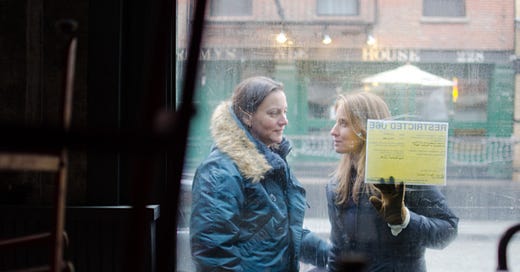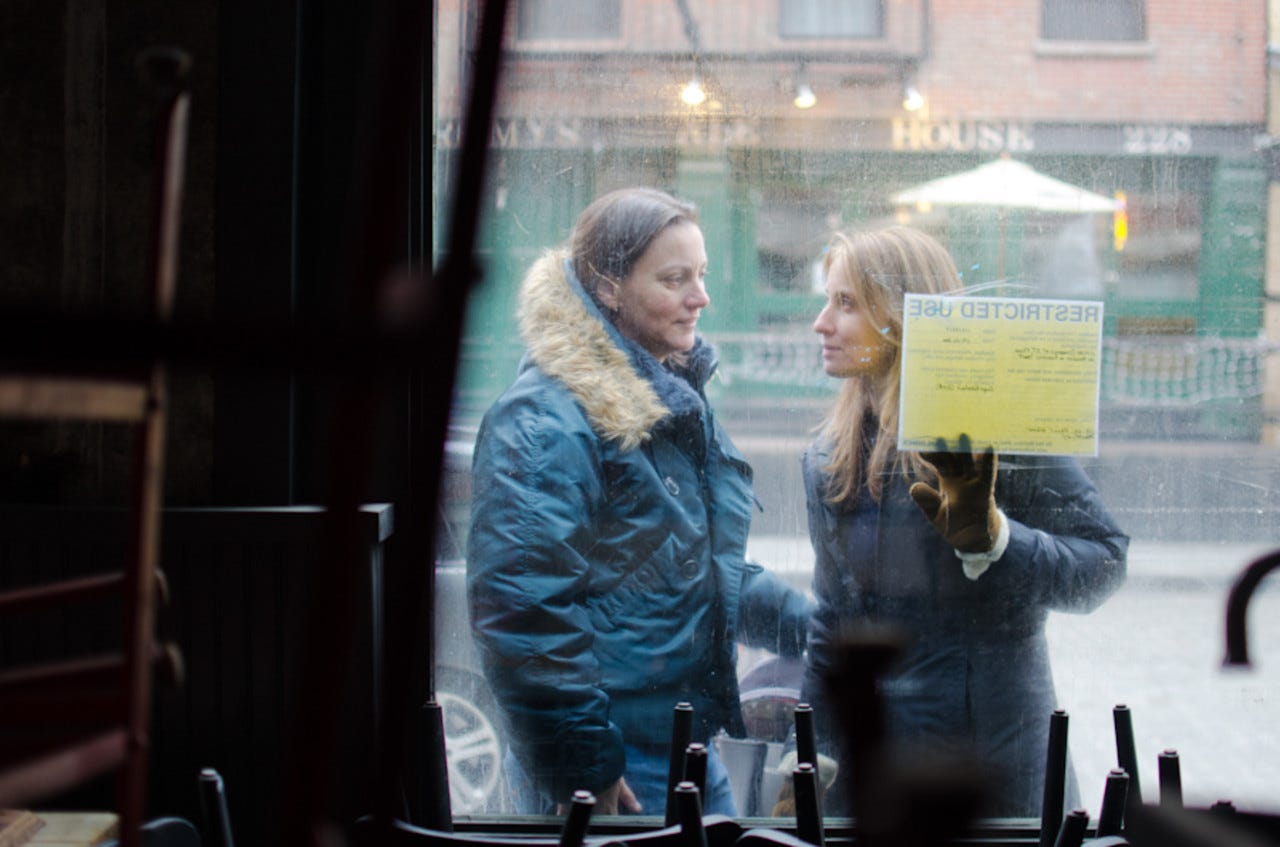Their Ship Has Not Sailed
With office buildings still closed, tenants relocated and tourists out of sight, South Street Seaport's small businesses struggle to survive.
On a cold February evening, only one streetlight flickers on dark, deserted Front Street. Beloved New York staples like the Paris Café are all boarded up, and generators are still scattered everywhere. During Superstorm Sandy, the East River rushed through the storefront windows of bars, shops and restaurants in and around South Street Seaport, tearing rooms apart and dragging their contents onto the sidewalk. Hundreds, maybe thousands of beer bottles burst through the Paris’s windows and out onto the street, where they lay surrounded by driftwood, seaweed and overturned barstools. More than three months later, the air still smells stale, a mix of mold and salt water. The usually bustling neighborhood is eerily quiet.
The neighborhood around Fulton Street is unusually accustomed to destruction and rebirth. After the Seaport mall opened here in 1985, chain outlets followed, opening along historic Schermerhorn Row. From there, residents and local shops gradually arri…
Keep reading with a 7-day free trial
Subscribe to Narratively to keep reading this post and get 7 days of free access to the full post archives.




